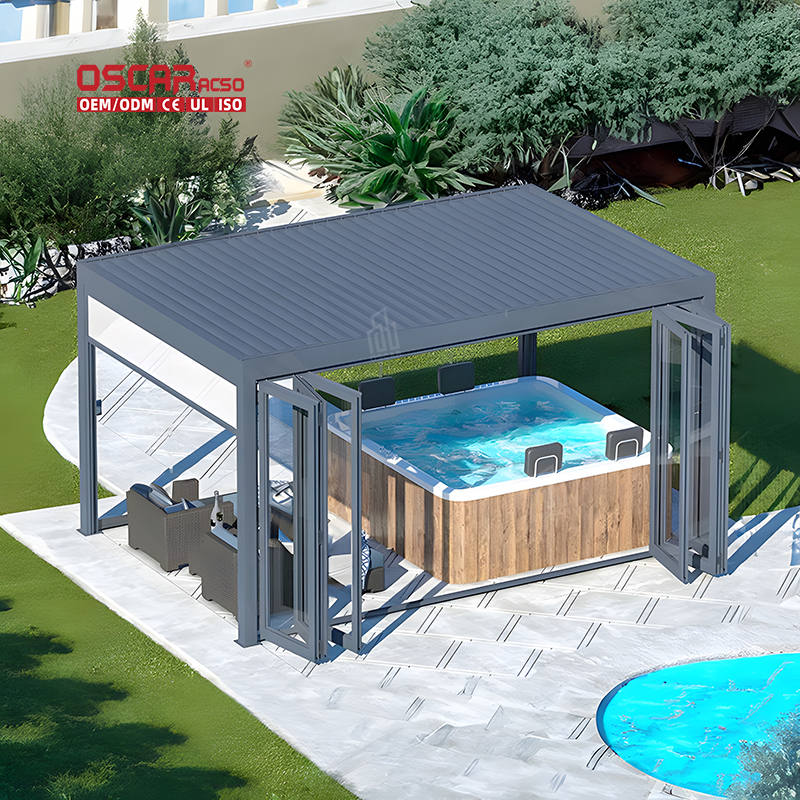Pergola Without Roof Secrets, Unlocking Airy Beauty & Smart Functionality
『Pergola Without Roof Secrets, Unlocking Airy Beauty & Smart Functionality』Ever looked at a classic pergola and wondered...
『Pergola Without Roof Secrets, Unlocking Airy Beauty & Smart Functionality』
.jpg)
Ever looked at a classic pergola and wondered, “Why on earth does this beautiful structure have no solid roof?”🤔 It seems counterintuitive at first. But there’s a brilliant method to this architectural madness! The open-roof design is not an oversight; it’s the very feature that makes a pergola unique, offering a perfect blend of sun and shade, shelter and openness.
✨ The Core Philosophy: More Than Just Missing Shingles
A pergola without a roof is a deliberate design choice rooted in history and functionality. Traditional pergolas were designed to support climbing plants, creating a living, breathing canopy that changes with the seasons . This design philosophy prioritizes:
- •
Connection with Nature: It frames the sky, allowing you to enjoy sunlight, starlight, and the changing patterns of clouds .
- •
Airflow and Ventilation: Unlike a solid roof, the open structure allows hot air to escape and cool breezes to flow through, making it a comfortable retreat on warm days .
- •
Aesthetic Framing: It acts as an architectural frame for your garden, defining an outdoor “room” without completely enclosing it, thus maintaining an open and spacious feel .
🌿 Top Reasons Pergolas Often Go Roofless
1. Perfect Light Filtering & Natural Shade Magic
The primary goal isn’t to block the sun entirely, but to filter it. The slatted roof creates a dynamic play of light and shadow, providing just the right amount of dappled sunlight. This makes it ideal for enjoying the outdoors without being fully exposed to harsh UV rays. You can even adjust the shade factor by choosing different rafter spacing or adding a retractable canopy .

2. Unbeatable Airflow for Ultimate Comfort
A solid roof can trap heat and humidity, turning your outdoor oasis into a sauna. The open design of a traditional pergola promotes exceptional cross-ventilation, keeping the space noticeably cooler and more comfortable than a fully enclosed structure on a hot, still day .

3. Support for a Living Canopy
Many pergolas are designed as a sturdy trellis for climbing plants. Imagine a canopy of wisteria, climbing roses, or grapevines weaving through the rafters. This living roof provides seasonal shade, beautiful blooms, and a delightful fragrance, deeply connecting the structure to your garden’s ecosystem .
4. Architectural Elegance and Space Definition
A pergola adds vertical interest and defines an outdoor space without the heavy, closed-in feel of a solid roof. It creates a sense of intimacy and purpose—marking a spot for dining, lounging, or relaxing—while seamlessly blending with the landscape .

5. Cost and Simplicity
Building a structure without a complex roofing system is often more affordable. It requires fewer materials and less labor, making a beautiful pergola accessible for various budgets. This simplicity also often translates to easier permitting processes in many localities .
⚖️ But What About the Drawbacks? Let’s Be Honest!
Of course, the classic pergola isn’t perfect for every situation. Its open nature means:

- •
Limited weather protection from heavy rain or snow .
- •
Less privacy compared to a fully enclosed structure .
- •
Furniture underneath is more exposed to the elements .
The key is to align your expectations with the design. A pergola is designed for filtered shade and airy shelter, not total enclosure.
🛠️ Brilliant Solutions: Bridging the Gap
What if you love the pergola form but need a bit more coverage? The modern market offers fantastic hybrid solutions!
- •
Retractable Canopies: These are a game-changer! You can enjoy an open-air feel on sunny days and pull across a waterproof fabric cover when it rains, offering the best of both worlds .
- •
Louvered Roof Systems (The Ultimate Upgrade): High-end pergolas feature motorized louvers that you can open, close, or adjust to any angle. This allows you to precisely control the amount of sunlight and rain protection, effectively creating a dynamic, solid roof when you need it .
- •
Polycarbonate Panels: These solid or translucent panels can be installed on top of the rafters for more permanent rain protection while still allowing light to filter through .
💡 So, Should YOUR Pergola Have a Roof?
This is the million-dollar question! The answer depends entirely on how you plan to use the space.
- •
Choose a classic open pergola if you value airy aesthetics, want to grow vines, primarily need shade on sunny days, and don’t mind heading indoors during rain.
- •
Consider a pergola with a adaptable cover (retractable or louvered) if you want maximum flexibility to use the space in all weather conditions, desire more protection, and have a larger budget.
The beauty of the modern pergola is that you are no longer limited to a binary choice. You can have the elegant form of a pergola with the functional benefits of a roof, creating a truly versatile outdoor living room.
The trend in outdoor living is moving towards seamless integration between inside and out. A pergola, in its pure or hybrid form, is the perfect architectural element to achieve this, proving that sometimes, less roof truly is more. 🏡

